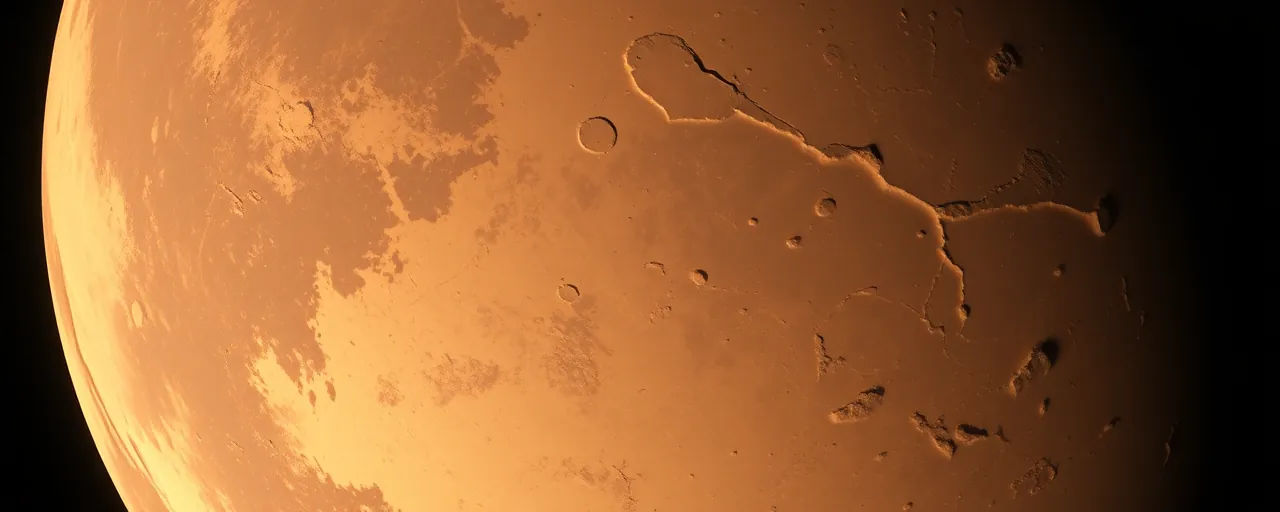A Martian Puzzle Unraveled
On a rocky outcrop in Mars’ Gale Crater, NASA’s Curiosity rover drilled into the planet’s past, uncovering a mineral that could rewrite the story of the Red Planet’s lost atmosphere. The discovery of siderite, an iron carbonate, at a site dubbed 'Ubajara,' offers a fresh clue to a question that has puzzled scientists for decades: what happened to Mars’ once-thick blanket of carbon dioxide? The finding, detailed in a recent paper in Science, suggests that much of the gas was locked away in minerals beneath the surface, reshaping our understanding of how Mars turned from a potentially habitable world into the cold, dry desert we see today.
For years, researchers have theorized that Mars, billions of years ago, boasted a dense atmosphere rich in carbon dioxide, warm enough to sustain liquid water. Evidence of ancient rivers, lakes, and possibly oceans dots the planet’s surface, yet the expected carbonate minerals, formed when carbon dioxide reacts with water and rocks, have been surprisingly scarce. Curiosity’s latest discovery challenges that narrative, revealing that siderite may have been hiding in plain sight, masked by other minerals in the planet’s sulfate-rich layers.
Drilling Into Mars’ History
Curiosity, a car-sized rover roaming Mars since 2012, made its find while exploring Mount Sharp, a towering feature in Gale Crater. Using its onboard drill, the rover bored into the Martian subsurface, collecting powdered rock samples that were analyzed by its CheMin instrument, which employs X-ray diffraction to identify minerals. The data, processed by scientists at NASA’s Johnson Space Center in Houston, confirmed the presence of siderite in three drill sites, a breakthrough that Benjamin Tutolo, lead author of the study from the University of Calgary, called 'a surprising and important' step in understanding Mars’ geologic evolution.
The siderite find is significant because it points to a time, roughly 3.5 billion years ago, when liquid water and carbon dioxide were abundant enough to form such minerals. Thomas Bristow, a coauthor from NASA’s Ames Research Center, likened the process to flipping through a history book. Each layer of rock, he explained, captures a snapshot of the conditions on Mars’ surface during its warmer, wetter past, offering a window into the planet’s transformation.
Yet the discovery also raises new questions. If siderite is abundant in Gale Crater, why hasn’t it been detected in larger quantities elsewhere? Orbital satellites, equipped with near-infrared spectrometers like the CRISM instrument on the Mars Reconnaissance Orbiter, have struggled to identify widespread carbonate deposits, possibly because sulfate minerals obscure their signatures. The finding suggests that Mars’ carbon dioxide may be locked in subsurface minerals across the planet, a hypothesis that future missions could test.
A Thinning Atmosphere
The presence of siderite supports a long-standing theory about Mars’ atmospheric decline. Early in its history, Mars likely had a thick atmosphere, with pressures ranging from 0.25 to 4 bar, sustained by volcanic outgassing and possibly hydrogen, which amplified greenhouse warming. Over time, the planet lost much of this atmosphere to space, stripped away by solar wind after its magnetic field faded. Data from NASA’s MAVEN mission show that 65% of Mars’ argon and other gases have escaped, with losses accelerating during periods of intense solar activity billions of years ago.
Carbonates like siderite played a dual role in this process. By forming in ancient lakes or groundwater systems, they sequestered carbon dioxide from the atmosphere, reducing its warming effect. This mineral trapping, combined with atmospheric escape, likely drove Mars toward its current state: a thin, cold atmosphere less than 1% as dense as Earth’s. The siderite discovery suggests that more carbon dioxide was locked in minerals than previously thought, potentially explaining why Mars cooled and dried out despite its early promise as a habitable world.
What Lies Ahead
The implications of Curiosity’s find extend beyond Gale Crater. If siderite and other carbonates are widespread in Mars’ sulfate-rich layers, they could account for a significant portion of the planet’s missing carbon dioxide. This would mean that Mars’ ancient atmosphere, while thick enough to support liquid water, may not have been as dense as some models suggest. Alternatively, additional carbon could be hidden in other deposits or lost to space, a possibility that missions like the European Space Agency’s Hera or NASA’s EscaPADE, both slated for 2025, might help clarify.
Looking further out, NASA and its partners are planning a new wave of Mars missions, from small, targeted probes to the ambitious Mars Sample Return campaign. These efforts aim to collect and analyze more subsurface samples, which could confirm whether siderite is a planetary feature or a local anomaly. India’s planned Mars Lander Mission in 2026 and private ventures, like SpaceX’s long-term vision for human settlement, underscore the growing momentum to unlock Mars’ secrets.
A Step Toward Understanding Mars
Curiosity’s siderite discovery marks a pivotal moment in the quest to understand Mars’ past. It not only resolves part of the mystery surrounding the planet’s missing carbonates but also highlights the power of in-situ exploration. By drilling into the Martian subsurface, rovers like Curiosity can uncover evidence that orbital instruments miss, offering a more complete picture of the planet’s history.
As scientists continue to analyze the data, the find invites reflection on Mars’ journey from a world of flowing water to one of barren plains. Each mineral, each layer of rock, tells a story of a planet that once held possibilities for life, and perhaps still does, preserved in its ancient stones. The search for those stories, driven by rovers and researchers alike, keeps Mars’ past alive, one discovery at a time.
